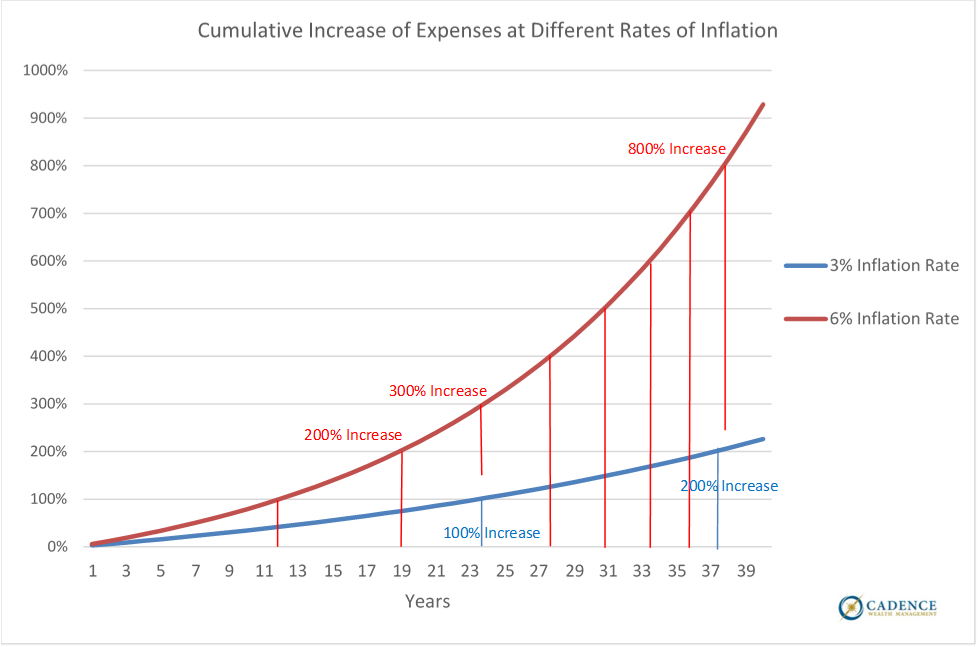The changes to what we pay for the goods and services we buy do not increase by the same rate every year; some years they go up slowly, some years they jump up, and some years the cost of certain goods or services even goes down. However, the longer-term trend is that the cost of the goods and services we purchase to live our lives is increasing. For most items that historic increase is around 3% annually. However, healthcare costs have been rising much faster over the past 40 years, with many estimates falling in the 6% to 8%+ per year range. This is concerning enough when considering how expensive the cost of care will be for a 75 year old for the next 20 years assuming a nice long life. However, it’s even more concerning for a 55 year old, because the younger you are, the more these costs could grow due to the compounding nature of annual increases.
For illustrative purposes, consider the cumulative growth over time of expenses growing by 3% and 6%, which are the assumed rates of increase for non-healthcare and healthcare expenses accordingly. The curved blue line is the cumulative increase in expenses experiencing a 3% annual rate of inflation, and the vertical blue lines underneath it mark the years in which the costs have increased an additional 100% over the original amount. So at 3%, the original cost has increased by 100% by around year 24, as noted by the first vertical blue line. 13 years later, that original cost has increased another 100%, as noted by the second vertical blue line. So the first 100% increase took 24 years, but the second 100% increase only took 13 years at a 3% rate of increase.
But notice what is happening to those expenses growing by 6% on average per year. It only took around 12 years for those expenses to increase 100% from their original cost, and then only another 7 for them to go up another 100% of that original cost, and then only another FOUR for them to increase 100% yet again. It is such that the 6% expenses have increased nearly 800% by the time the 3% expenses have increased 200%. If this is roughly how non-healthcare and healthcare expenses are going to behave in the future, a 65 year old retiree could see his or her healthcare costs increase 300% by age 88.
That seems incredible, doesn’t it? Healthcare expenses can’t possibly increase 6% per year for decades and decades, or it will eat our economy! That may end up being true, but consider this: according to the Center for Medicare & Medicaid Services, the cost of the amount spent on healthcare in the United States per person since 1976 has actually increased FASTER than 6%:
Hopefully healthcare costs increase at a slower rate in the future, and estimates suggest this has actually happened on a per capita basis the past handful of years. Unfortunately, many of the legislative accomplishments that made that possible have now been stripped away, so do not be surprised if those costs start increasing at a faster rate once again.




